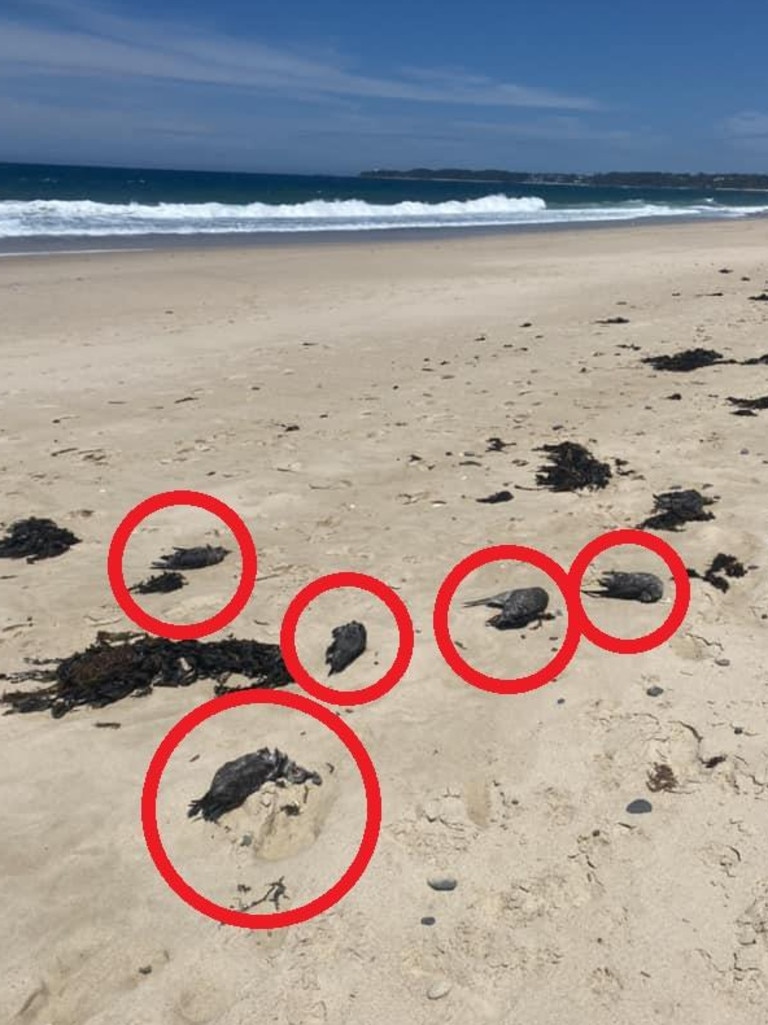‘Thousands’ of dead and dying birds are washing ashore on the East Coast
Many Aussies heading to the beach are being greeted by a truly horrific sight. Now experts have lifted the lid on the disturbing trend.

Aussies are reporting hundreds of dead birds washing up on the eastern shores of the country – and that number is only growing, with no system in place to properly record them.
The short-tailed shearwater, also known as the muttonbird, travels over 10,000km from Alaska to Victoria and Tasmania every year to breed.
An increasing number of these birds have been dying on the three-week journey, and Australian locals have been finding their bodies washing ashore.
There are several theories as to the cause, but leading experts say climate change is to largely blame for the deaths. They suggest increasing temperature in the water has made fishing for these seabirds increasingly difficult, and severely driven up starvation rates.
Others speculate strong weather conditions may have led to many of these birds being beached across New South Wales.
One user on social media said their friend collected “over 150 dead birds” from their local beaches, with others saying they saw “dozens” to “hundreds” in their areas.

Penny McMullin is a volunteer from the Australian Wildlife Rescue Organisation (WIRES), and said that collecting and trying to rescue the birds was a “devastating” experience.
Ms McMullin visited North Cronulla Beach, in Sydney’s south, on Sunday after hearing a report of at least 50 dead muttonbirds. When she arrived with six other volunteers from separate organisations, she found herself looking at bodies “as far as you can see”.
“We collected about 30 that were still alive,” she told news.com.au after her and the other volunteers covering over a kilometre of the beach. “By the next day, of the 30, I’m only aware of two that were actually still alive. So I think that made it even worse, because we’d had a bit of hope that we’d be able to help.”
Ms McMullin wondered how many more of the birds had washed in without being reported or noticed. “They’re just such beautiful birds,” she said. “If people are finding these birds on the beaches, urgently report them, straight away, to the closest wildlife organisations.”


One major problem with measuring just how many birds are dying is that Australia doesn’t have an official method of documenting it.
Dr Jennifer Lavers of the University of WA is the team leader of research group Adrift Lab, one of several organisations trying to document these deaths. She told news.com.au that there is no easy way to get an exact number of the “thousands” dying in this year’s migration.
“Australia doesn’t have a national calling or monitoring system”, she said, with documentation being divided between institutes such as Adrift Lab, wildlife conservationists and zoos. “All those different channels don’t necessarily communicate with one another.
“We had 416 [deaths] reported to us just yesterday. So we’re already talking about thousands.”
This is not the first mass mortality event to happen to these birds. In 2013, approximately three million muttonbirds died off the East Coast – and while it was attributed to natural causes at the time, the Commonwealth Scientific and Industrial Research Organisation (CSIRO) reported many of these birds were starving, and had been found eating pumice stone and plastics before their deaths.
“I think two quite significant mass mortality events now in 10 years really speaks to the need for this,” she said. “Clearly there’s a need. So let’s bring together the representative groups, wildlife carers, zoo state departments and ourselves. And let’s have a conversation about who’s best placed to co-ordinate a national response.”

High rates of dead muttonbirds have also been found on the coast of Alaska, where they would normally return from their migration.
Dr Lavers is one of several to suggest that the cause of these growing deaths is the heating of the oceans due to climate change. While Australia’s coast experienced severe weather conditions recently, Dr Lavers said that this only means the already dead and dying birds are more frequently washing ashore.
“The key thing is, seabirds are sea birds,” she said. “They are highly pelagic, they want to be on the open ocean. Coming to land is not something they’re comfortable with. It usually indicates one of two things: Either they’re ready to breed, or they’re ready to die.
“If you see a seabird on land, odds are it means they’re extremely unwell, and that has nothing to do with a windstorm. It has everything to do with the fact that the oceans are too warm.”





